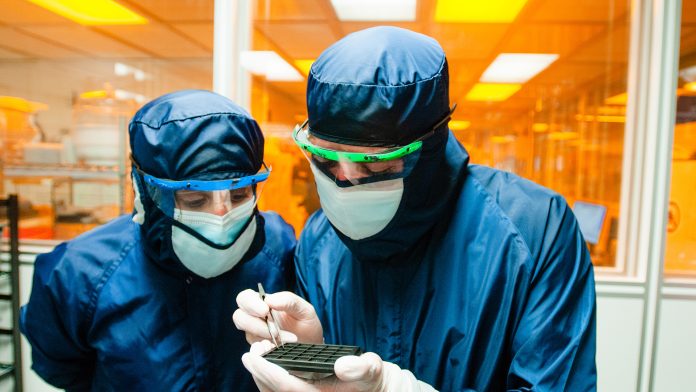Innovative programmes, partnerships, and scholarships are driving advances in research at the Université de Sherbrooke, a leading Canadian institution renowned for its commitment to excellence and discovery.
The Université de Sherbrooke (UdeS), located in the heart of Québec, is a research and innovation powerhouse. Its diverse range of research programmes are nationally recognised and have significant global impact. The university is dedicated to creating the next generation of researchers and has established itself as an international hub for academic excellence.
To discuss the university’s dynamic research environment, variety of expertise and commitment to scientific excellence, Dr Jean-Pierre Perreault, Vice-President, Research and Graduate Studies, at the Université de Sherbrooke spoke with The Innovation Platform.
Can you provide a brief overview of Université de Sherbrooke and the opportunities you have to offer?
A university community at the service of society, the Université de Sherbrooke (UdeS) is dedicated to learning, critical knowledge-seeking and the quest for new insights through teaching, research, creation and social engagement. UdeS is a French-language university located in Québec, Canada. It welcomes 31,170 students to its three campuses, including 3,000 international students from 104 countries.
UdeS is the only university in the province of Québec located outside a metropolitan area offering a complete range of training programmes, from medicine and engineering to law, science, humanities, arts, social sciences and management.
Because the next generation of researchers is at the heart of our research enterprise, UdeS has set up an ambitious institutional scholarship programme to support excellence in research, awarding Master’s scholarships worth up to $50,000 for two years and doctoral scholarships worth up to $105,000 for three years. One hundred new scholarships are awarded annually to students enrolled at UdeS, including international applicants.
Our recognised research expertise lies in a variety of disciplines including: Quantum sciences, sustainable health, outdoor education, green chemistry, and integrative ecology. At UdeS, research is structured around six multidisciplinary unifying themes. The university boasts 19 research centres, over one hundred research chairs, six interdisciplinary institutes and two CNRS International Research Laboratories: The Nanotechnologies and Nanosystems Laboratory (LN2) and the Quantum Frontiers Laboratory.
By combining our disciplinary strengths, we explore emerging scientific fields and enable promising innovations that shed new light on societal challenges. Across each theme, researchers develop new methodologies, multiply the angles from which they analyse complex issues, and find innovative ways to improve systems thinking in research.
Where does the Université de Sherbrooke research stand compared to other Canadian institutions, and what is its ranking in the international GreenMetric ranking system?
Across all disciplines, the UdeS is transforming society through discoveries and analyses, each more relevant than the last. As of 2023, this dynamism propelled UdeS to an unprecedented tenth place among Canada’s most research-intensive universities, as measured by research income, according to Research InfoSource. Over the past 20 years, Université de Sherbrooke has posted the highest growth in research revenues among Canadian universities.
Research revenues are a reliable indicator of quality university research, testifying to the confidence partners and funding agencies have in the university’s research teams and their readiness to train the next generation of highly specialised researchers in priority areas.
Sustainable development
For the past 11 years, UdeS has ranked first among Canadian universities and among the top 20 universities globally in sustainable development, according to the GreenMetric international ranking.
Achieving carbon neutrality in June 2022 – eight years earlier than planned – is one of the contributing factors to our continual improvement. This result is even more impressive considering that UdeS has more than doubled its campus infrastructure since the 1990s, and student enrolment has jumped by almost 60% since 2002.
These results are driven by a 64% reduction in greenhouse gas (GHG) emissions since 2002, propelled most notably by installing a geothermal system, transitioning to hydroelectricity from steam heating, and purchasing renewable natural gas.
Further, our solar park, the largest such park dedicated to applied research in Canada, also ensures savings of some 6850m³ of natural gas annually.
How does the Université de Sherbrooke utilise its partnerships to foster innovation within organisations, particularly regarding scientific excellence and knowledge transfer?
UdeS has developed an effective and innovative model for university-business partnerships. We focus on entrepreneurship, collaboration and knowledge sharing across all disciplines and various public and private partners.
We have also seen notable successes in technology transfer: From 2017-2022, the commercialisation rate for inventions resulting from UdeS research activities was 46%, among the highest in North America.
UdeS’s signature Integrated Innovation Chain is a driving force for innovation in Québec and Canada, supporting organisations in Artificial Intelligence, quantum technologies, digital technology, and innovative manufacturing. Since 2010, it has benefited from over a billion dollars in investments, of which 60% is from private sector partners.
Anchored at the junction between university research and the development of new industrial products, the Integrated Innovation Chain drives innovation from basic research at Institut Quantique through advanced development at the Interdisciplinary Institute for Technological Innovation (3IT) and through to pre-commercial testing at MiQro Innovation Collaborative Centre (C2MI).
The UdeS is a founding partner in the first two designated Québec Innovation Zones. DistriQ is a quantum innovation zone dedicated to quantum sciences and technological applications. Technum Québec specialises in digital technologies. These zones, supported by public, private, and international investments, are designed to increase the commercialisation of innovation, generate exports and stimulate local and foreign investment in all regions of Québec.
From the University’s perspective, they will significantly impact teaching and research while attracting and retaining talent, generating multiple, high-value-added spin-offs and creating hundreds of high-quality jobs.
UdeS is home to a wealth of knowledge; can you elaborate on some of your fields of expertise?
While UdeS has many fields of expertise, our research in the high Arctic illustrates our commitment to multi-disciplinarity, collaboration with communities and impacting the problems that matter to society.
At present, the Arctic is the fastest-warming region on the planet. Université de Sherbrooke professor, Dr Alexandre Langlois, a geographer by training and a specialist in Earth evolution, is the instigator, in partnership with colleagues from three other Canadian universities, of the Multidisciplinary Observatory for Monitoring Climate Change and Extreme Events in the Arctic (MOACC).
The main objective of this project is to develop a permanent multidisciplinary scientific infrastructure that will enable long-term observations of climate change in the Arctic by bringing together experts from a wide range of backgrounds and institutions. The innovative aspect of MOACC lies in its multidisciplinary approach, enabling long-term measurements of the Arctic in several disciplines: Atmosphere, permafrost, remote sensing, etc.
The observatory is located at the Canadian High Arctic Research Station (CHARS) in Cambridge Bay, Nunavut. The team aims to make the site one of the largest instrumented observatories in the High Arctic, dedicated to monitoring key indicators that determine climate change. The site has created and strengthened partnerships with Canadian research centres, organisations, the Inuit community, and international research partners and networks.
Please note, this article will also appear in the seventeenth edition of our quarterly publication.









